On the outskirts of Cusco is Saqsaywaman, an Inca fortress that is an amazing example of unique Inca architecture. Each stone fits perfectly together, and the tallest is almost 9 meters high! These huge stones were fabricated 10 miles or more away and then rolled on logs pulled and pushed by teams of men. Not slaves.
The Incas “rotated” their teams of workers every two years. Of course the most grueling and least favorite job was rock rolling. But it was not your forever lot in life. After two years, your job could be farming. We’re talking 1438!
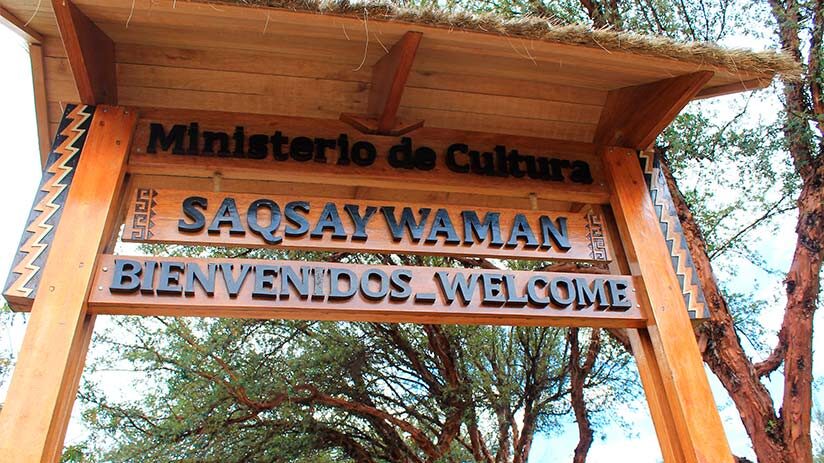
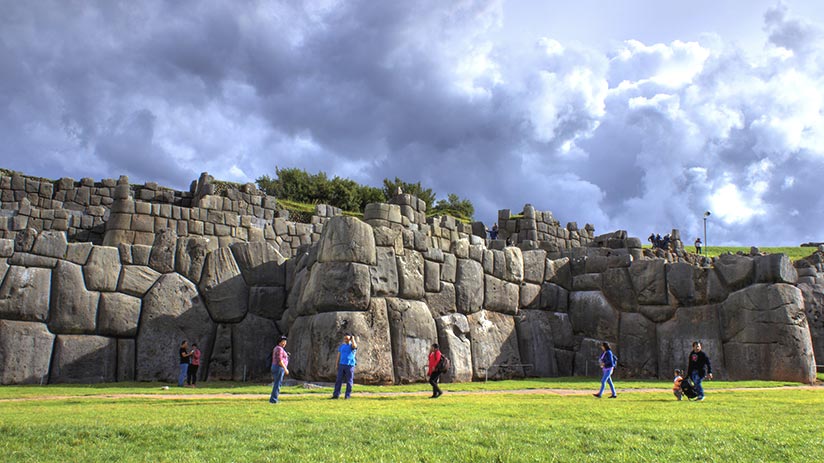
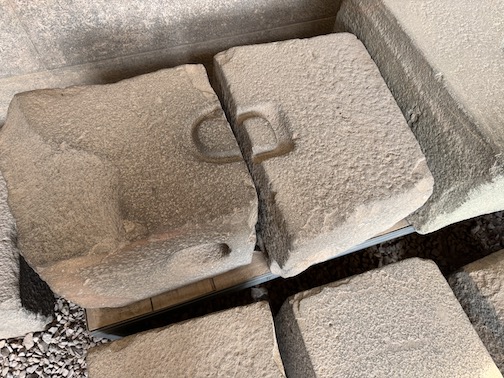
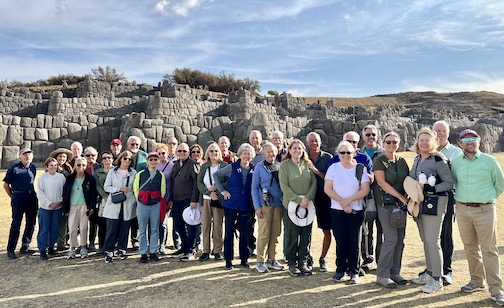
Cusco hotel is a former monastery behind the main square and cathedral. We will spend two nights here giving us a choice of how to spend our full day on Thursday, Oct. 10. John and I choose the half-day tour of “old Cusco,” and Donna and Martha choose the all-day tour of the highlands and their villages. (Donna is my guest blog photographer further down.)
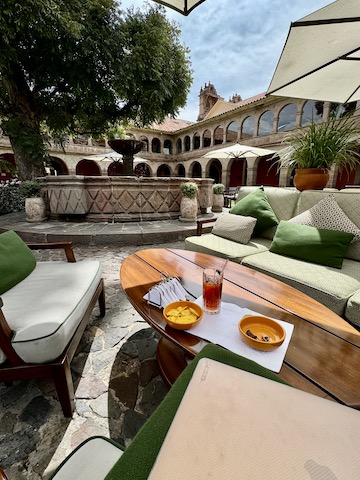
Fun (?) fact about that tree in the courtyard: It’s the oldest, lone cedar tree in Cusco. The Spanish cut down cedar forests to build altars and the choir loft inside the cathedral during the colonial period. Young cedars have been planted, but nothing close to the grandeur of this one.
Stay with me. The colonized Incas make their mark in a way that lives forever.
Cusco School of Painting. The influence of the Spanish brought about a new style of art, one that combined Inca traditional elements with European imagery and techniques. Imagery was the most successful tool used by the Spaniards in their quest to Christianize the Andean population. By teaching locals to paint Christian subjects, they were able to infuse Christianity into Andean traditions. The Inca artists copied existing works of religious art for the Cathedral, and they frequently inserted subtle and not-so-subtle elements from their Inca religion.
We are not allowed to take photos inside the cathedral, so I take notes on the most memorable example of this “hybrid” form of painting.
Behold, Marco Zapata’s interpretation of “The Last Supper.”
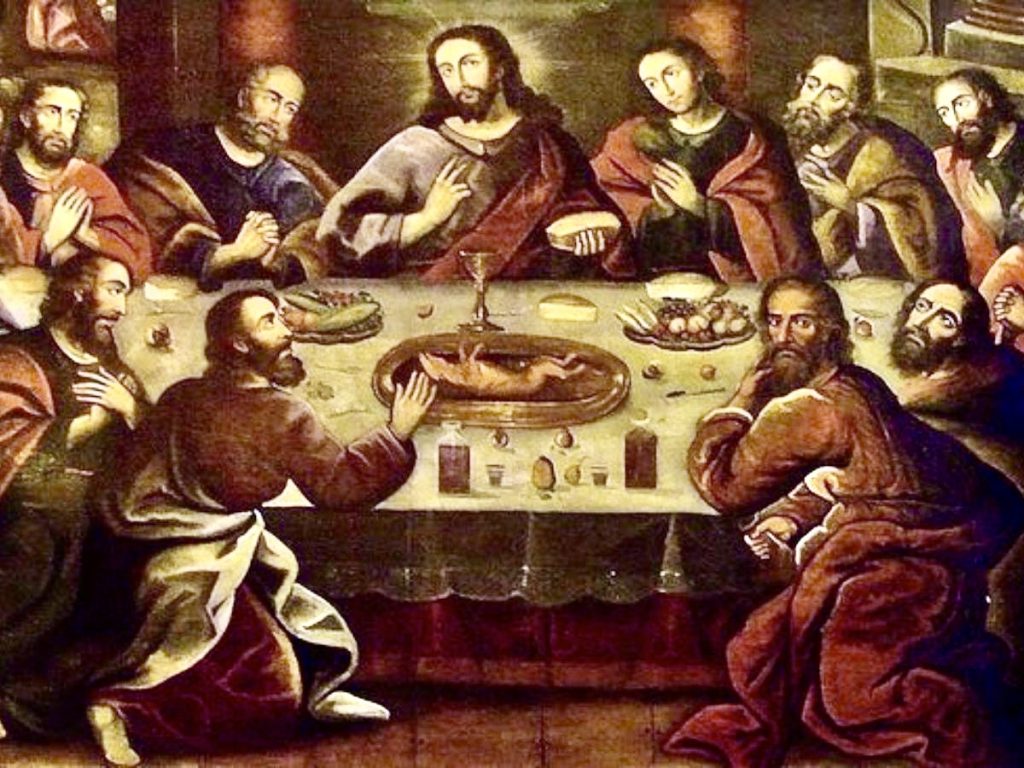
Yes, that’s a guinea pig with legs akimbo in the center of the table. But, wait, there’s more.
Notice that the Disciples are all looking at Jesus or toward heaven. Except for Judas, the figure in the lower right who seems to be peering at us. Sorta makes sense in that he betrays Jesus and looks shifty. Da Vinci’s depiction of Judas is not even close to Zapata’s.
Zapata inserted the face of Francisco Pizarro, known as the Spanish conqueror of the Inca Empire and founder of Lima as the face of Judas the traitor.
Our guide tells us that it took decades for any Colonials to notice it.
And now, photos from the Highlands Tour, brought to you by my Guest Blogger Donna Halker and her assistant, Martha Ross.
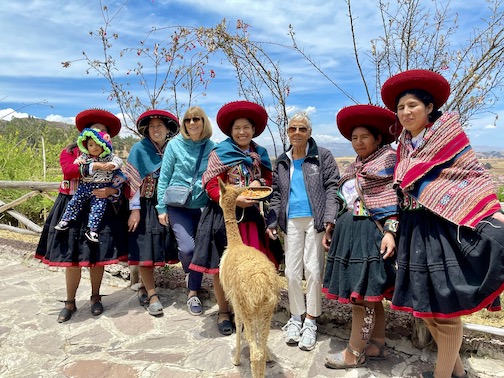
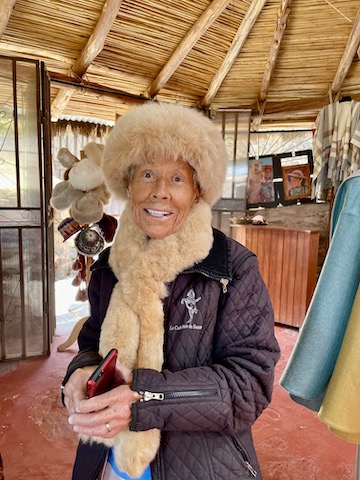
The next day is all-day travel to Guayaquil, Ecuador. We fly from Cusco to Lima and then transfer to the International Terminal to fly to Guayaquil, Ecuador. (I learn that there are no direct flights to the Galapagos; you must stay in Quito or Guayaquil before flying to the islands.
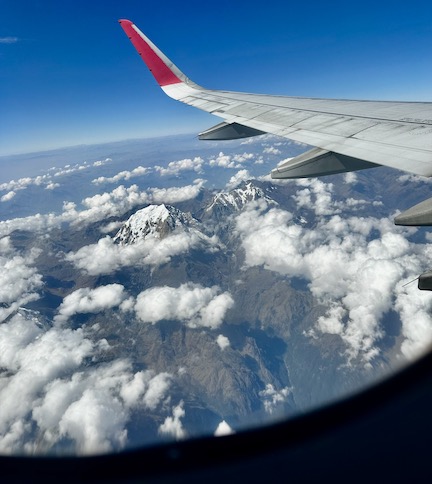
Guayaquil hotel is palatial. We leave Cusco at 6 am and arrive at our Ecuadorian lodging at 5 pm. Our room is crazy big. Below, John demonstrates The Flop, a non-yoga move invented by my granddaughter Bailey when she and I travelled by various sundry transportation vehicles to the Youth Leadership Conference at my National Speaker’s Association annual convention.
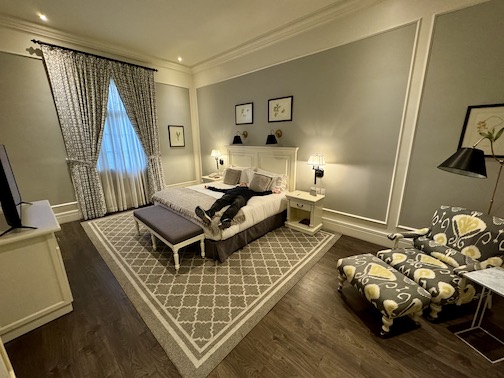
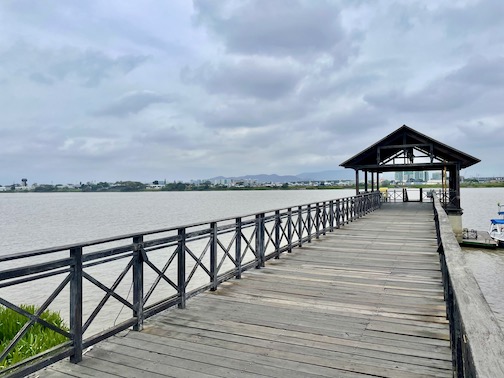
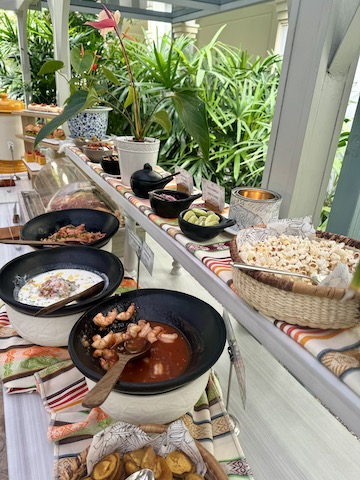
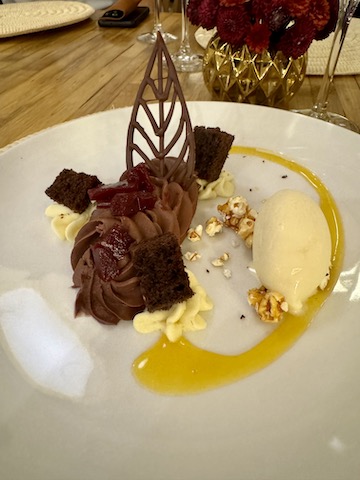
Manana en la Manana–Galapagos here we come!
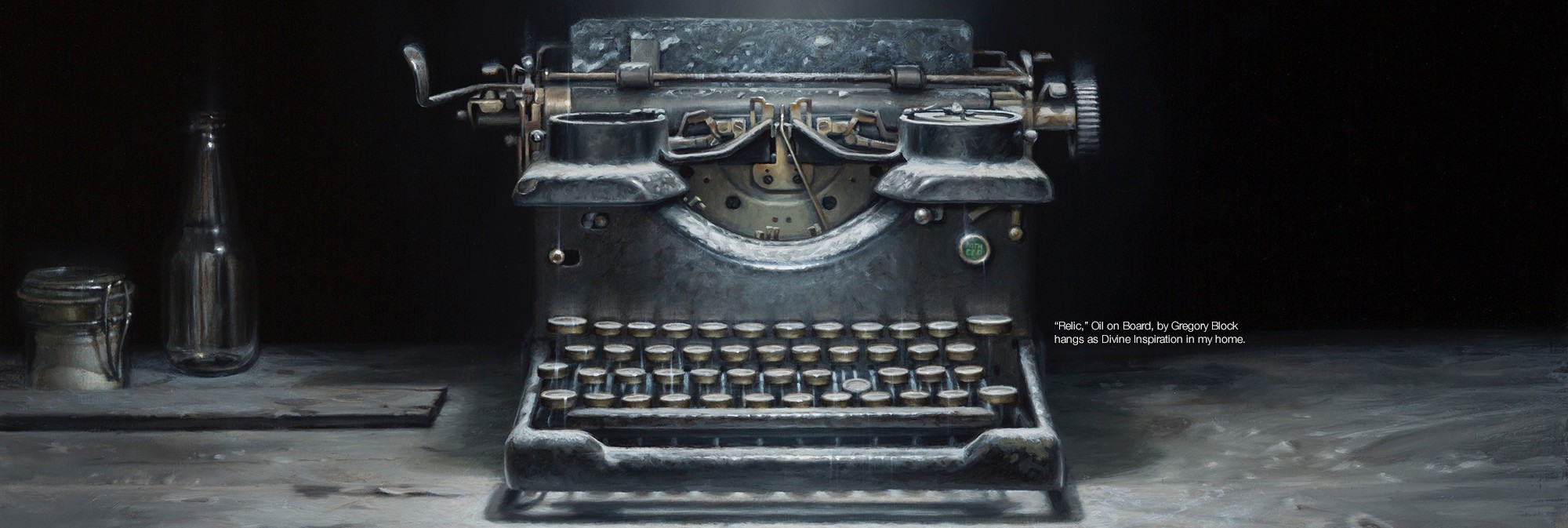
Thanks for sharing your knowledge of this part of the world…love your pictures too‼️
How many pounds have you put on since you left? The food looks almost too beautiful to eat.
Love, Mom